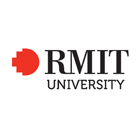Advanced Diploma of Electronics and Communications Engineering – UEE60220
- Home
- Courses
- RMIT University (Royal Melbourne Institute of Technology University)
- Advanced Diploma of Electronics and Communications Engineering – UEE60220
Advanced Diploma of Electronics and Communications Engineering – UEE60220
Get started in a career where you will design electronic products and processes that make a difference. You’ll develop skills to design, validate, and evaluate electronics and communication equipment as well as systems. You’ll also be able to manage risk, estimate and manage projects, and provide technical and sales advice….
Categories
COURSE DESCRIPTION
Get started in a career where you will design electronic products and processes that make a difference.
You’ll develop skills to design, validate, and evaluate electronics and communication equipment as well as systems.
You’ll also be able to manage risk, estimate and manage projects, and provide technical and sales advice.
You will learn skills in programmable gate array technologies, circuit simulation, printed circuit board design, digital and analogue systems and applications, amplifiers, analogue integrated circuit design, communication systems, mobile phones, global positioning systems (GPS), microwave links, embedded controllers, AM/FM, computer programming, engineering software and project management, and computational solutions.
Career
As a graduate of this course, your skills will be applicable to a wide range of business, manufacturing and operational occupations where electronics and communications underpin the business.
You may work in a range of industries/fields such as:
manufacturing
telecommunications
electronics equipment and services
security systems
scientific instruments and sales
Further study
When you successfully complete the Advanced Diploma of Electronic and Communications Engineering you are guaranteed entry in the Bachelor of Engineering (Electronic and Computer Systems Engineering) (Honours) and will receive three semesters of advanced standing (equivalent to 144 credit points).
EDUCATIONAL INSTITUTION
Since its establishment in 1887, Royal Melbourne Institute of Technology University (RMIT) has been meeting the needs of the community surrounding it. Originally a Working Men’s College, RMIT showed its flexibility during World War Two, training over 20,000 servicemen in communications to help with the war effort.Now, it is a true pioneer in international education, championing cross-border study opportunities with campuses in various countries. Granted formal university status in 1992, RMIT is ranked 21st in the world for universities that are less than 50 years old.RMIT is the largest higher education institution in Australia, currently with more than 82,000 students. With nearly 20% of those students coming from overseas, it is a university that truly welcomes diversity and is a melting pot of different cultures. RMIT has three campuses in Vietnam, a European hub in Barcelona, an office in Indonesia, and partners with 200+ institutions in 42 countries to provide study opportunities worldwide.
Do you want to Apply to:
Advanced Diploma of Electronics and Communications Engineering – UEE60220
Add Your Heading Text Here
Please, login or Register to Apply!
Do you need extra info about:
Advanced Diploma of Electronics and Communications Engineering – UEE60220?
Since its establishment in 1887, Royal Melbourne Institute of Technology University (RMIT) has been meeting the needs of the community surrounding it. Originally a Working Men’s College, RMIT showed its flexibility during World War Two, training over 20,000 servicemen in communications to help with the war effort.
Now, it is a true pioneer in international education, championing cross-border study opportunities with campuses in various countries. Granted formal university status in 1992, RMIT is ranked 21st in the world for universities that are less than 50 years old.
RMIT is the largest higher education institution in Australia, currently with more than 82,000 students. With nearly 20% of those students coming from overseas, it is a university that truly welcomes diversity and is a melting pot of different cultures. RMIT has three campuses in Vietnam, a European hub in Barcelona, an office in Indonesia, and partners with 200+ institutions in 42 countries to provide study opportunities worldwide.




